The Cantellated 600-cell
The cantellated 600-cell is a uniform polychoron in the 120-cell/600-cell family. It is bounded by 600 cuboctahedra, 120 icosidodecahedra, and 720 pentagonal prisms, for a total of 1440 cells, 8640 polygons (3600 triangles, 3600 squares, 1440 pentagons), 10800 edges, and 3600 vertices.
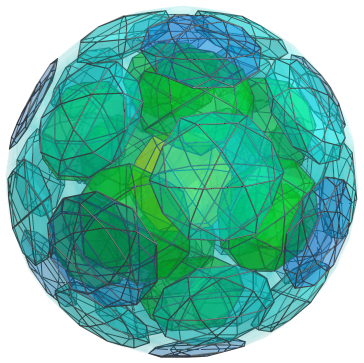
Structure
We shall explore the structure of the cantellated 600-cell by means of its parallel projection into 3D, centered on an icosidodecahedron.
First Layer
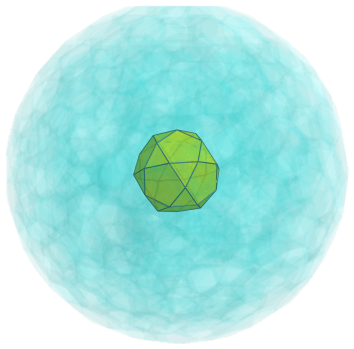
The above image shows the nearest icosidodecahedron to the 4D viewpoint. For clarity, we omit all the remaining edges and vertices, and render the other cells in a light transparent color.
Second Layer
This nearest icosidodecahedron is surrounded by 12 pentagonal prisms, joined to its pentagonal faces, as seen in the next image:
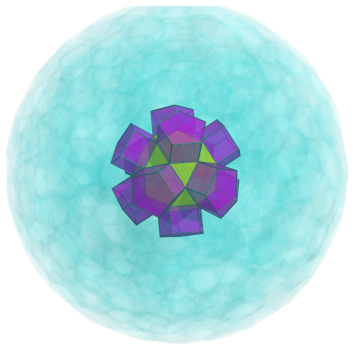
The triangular faces of the nearest icosidodecahedron are joined to 20 cuboctahedra, shown below:
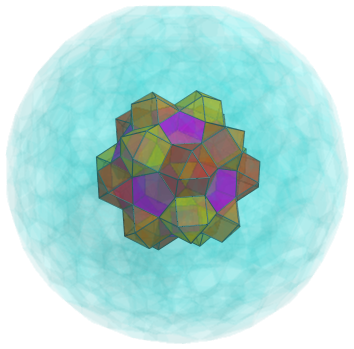
Third Layer
Straddling each adjacent pair of cuboctahedra are another 30 pentagonal prisms. These are shown next:
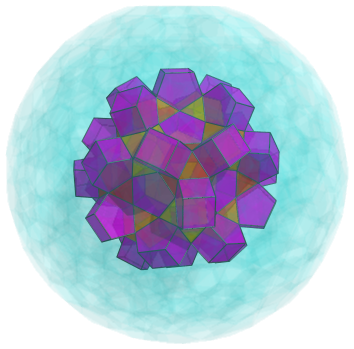
Between each trio of prisms are another 20 cuboctahedra:
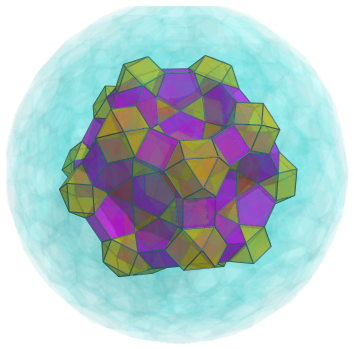
The crater-like depressions between these cells are filled in by 12 icosidodecahedra:
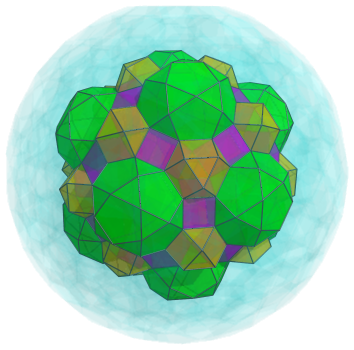
Fourth Layer
The exposed square faces of the pentagonal prisms are joined to another 30 cuboctahedra:
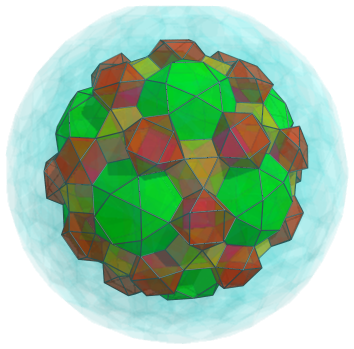
Between each adjacent pair of these 30 cuboctahedra is another pentagonal prism, resting on the pentagonal faces of the icosidodecahedra. There are 60 of these prisms:
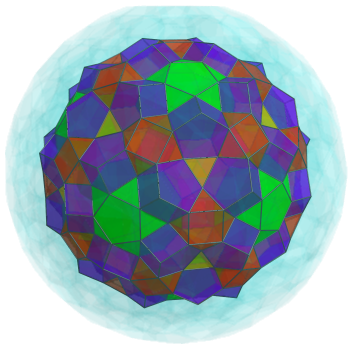
These pentagonal prisms form interesting “propellor” configurations around each cuboctahedron.
The exposed pentagonal faces of the icosidodecahedra are connected to another 12 pentagonal prisms, as shown next:
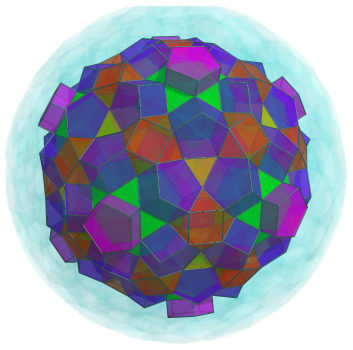
The remaining exposed triangular faces of the 12 icosidodecahedra are joined to another 60 cuboctahedra:
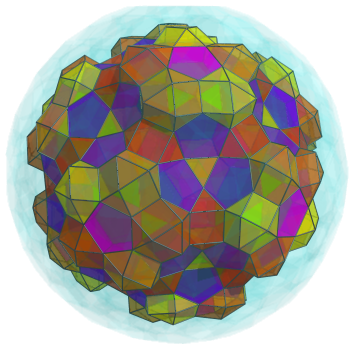
Finally, another 20 icosidodecahedra fit into the bowl-shaped depressions above each triplet of pentagonal prisms:
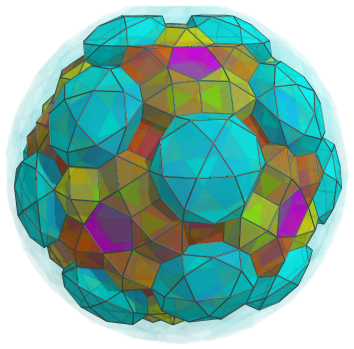
Fifth Layer
The gaps between the 20 icosidodecahedra in the last layer are filled in by pentagonal prisms, 30 of them in total, as shown below:
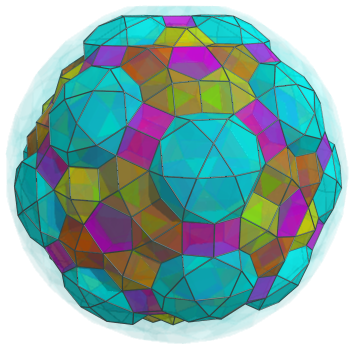
Straddling pairs of cuboctahedra in each circle of 5 cuboctahedra are another 60 pentagonal prisms, shown next:
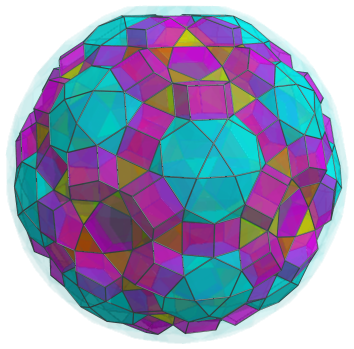
The gaps formed by these pentagonal prisms and the previous ones are filled in by more cuboctahedra, 60 of them, occurring in 30 pairs:
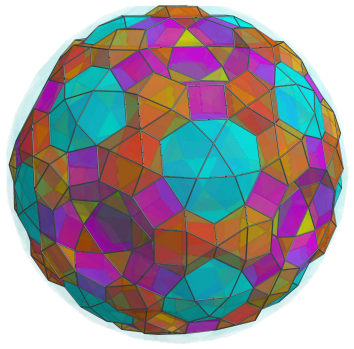
The bowl-shaped depressions that remain are now filled by another 12 icosidodecahedra:
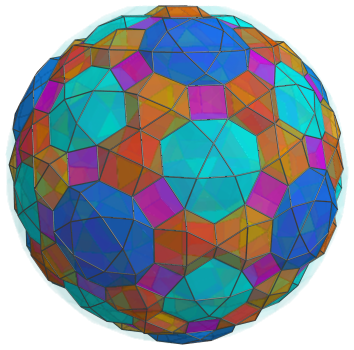
The remaining exposed square faces of the pentagonal prisms are joined to yet another 60 cuboctahedra:
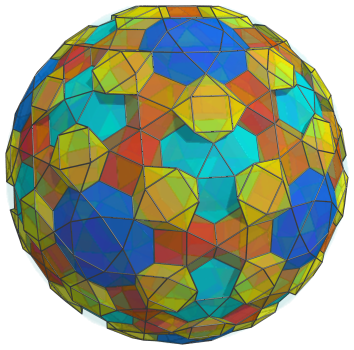
The gaps between these cuboctahedra and the pentagonal faces of the cyan icosidodecahedra are obviously filled in by more pentagonal prisms. There are 3 pentagonal prisms per icosidodecahedron, thus totalling 60 more pentagonal prisms:
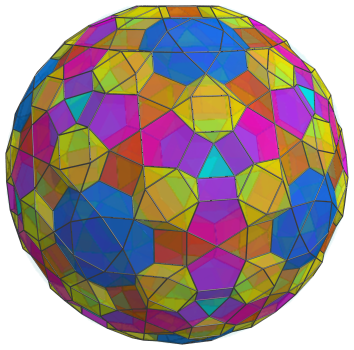
The last remaining exposed triangular faces of the cyan icosidodecahedra are joined to another 20 cuboctahedra:
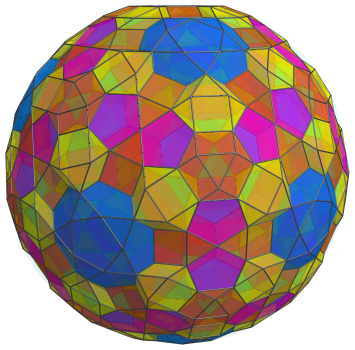
Finally, five more pentagonal prisms are joined to each of the blue icosidodecahedra, for a total of another 60 pentagonal prisms before we reach the equator:
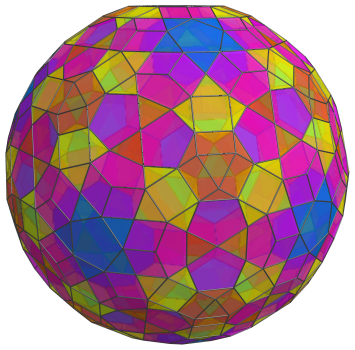
These are all the cells that lie on the near side of the cantellated 600-cell. Following these are the cells that lie on its “equator”.
Equator
At the equator of the cantellated 600-cell are 30 icosidodecahedra, corresponding with the 30 edges of a dodecahedron. The following image shows these cells. For clarity, we omit the other cells we have seen so far.
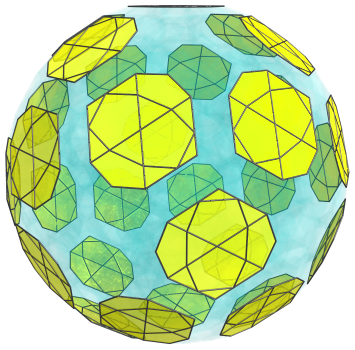
These icosidodecahedra are seen from a 90° angle, so they appear as flattened octagons. However, this is merely an artifact of projection; in 4D they are perfectly uniform icosidodecahedra.
There are also 60 cuboctahedra in 12 groups of 5, as seen below:
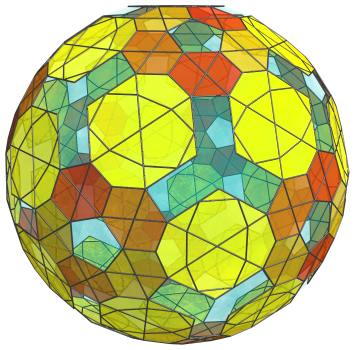
These cuboctahedra have been foreshortened into hexagons because they lie at a 90° angle to the 4D viewpoint; in 4D, they are perfectly uniform cuboctahedra.
The pentagonal gaps between these cuboctahedra are filled in by pentagonal prisms:
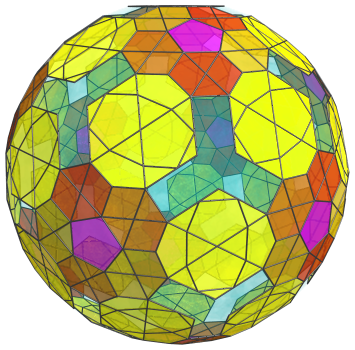
These pentagonal prisms are seen at a 90° angle, so they appear flattened into pentagons. Besides these, there are another 60 pentagonal prisms on the equator:
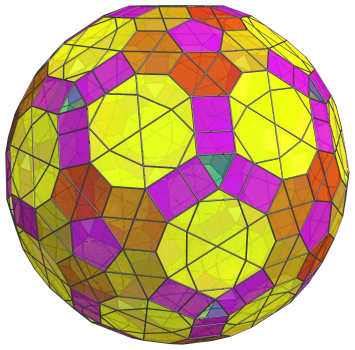
These pentagonal prisms are also seen from a 90° angle, but in a different orientation; hence they appear flattened into rectangles. All of these pentagonal prisms are perfectly uniform in 4D.
These are all the cells that lie on the equator of the cantellated 600-cell. The remaining 20 triangular gaps are not images of any cell; rather, they are where 20 cuboctahedra on the near side of the cantellated 600-cell touch their counterparts on the far side.
After this point, we reach the far side of the cantellated 600-cell, where the arrangement of cells exactly mirrors the arrangement we have seen on the near side, with the layers repeating in reverse order.
Summary
The following table summarizes the cell counts in each of the layers of the cantellated 600-cell:
Coordinates
The coordinates of the cantellated 600-cell, centered on the origin and having edge length 2, are all permutations of coordinates and all changes of sign of:
- (0, 0, 2φ, 2+6φ)
- (0, 2, 2φ3, 2φ3)
- (1, 1, 1+4φ, 3+4φ)
- (φ3, φ3, 1+4φ, 1+4φ)
together with the even permutations of coordinates and all changes of sign of:
|
|
where φ=(1+√5)/2 is the Golden Ratio.




